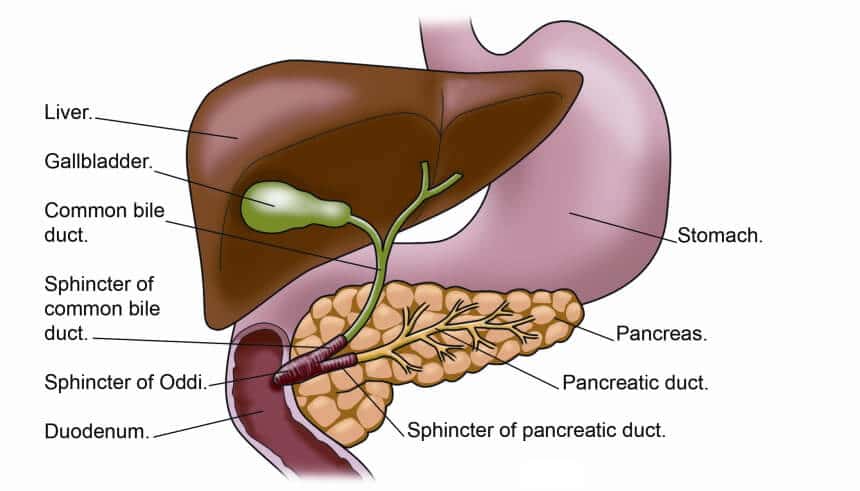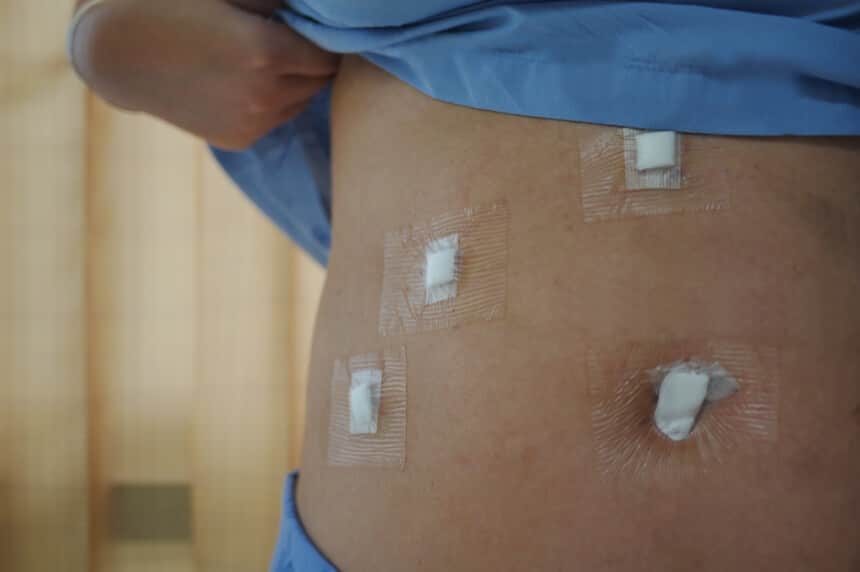

If you are about to have gallbladder surgery, you may have a few questions. One of them is ‘how to sleep after gallbladder surgery?’ In this guide, you will find out how to do it safely. While it may seem almost impossible to sleep on your right side (where your gallbladder is located), you have different positions to consider. Even if you are naturally a back sleeper, you’ll want to be as comfortable as possible.
We’ll talk about the purpose of the gallbladder and when surgery is necessary. We’ll go into the details of what’s done during the surgery and the recovery process as a whole. Yes, you will be dealing with pain and discomfort after the fact. It could mean affecting your sleep quality. But we’ll make sure that you’re able to sleep well when you are recovering. Your doctor will have post-operational instructions, including how you can sleep. But to prep you on what to expect, keep reading, and we’ll tell you more.

The organ is the shape of a pear. The purpose of the gallbladder is to store bile, which is produced by the liver. The chief purpose of bile is to help with the digestion process after you eat. Bile will help break down any fatty acids that exist in your small intestines.
Aside from the digestion process, bile helps eliminate waste in your body. The gallbladder is something that you can live without. In fact, you can rest easy knowing that you can still be able to eat properly and live a fulfilling life once your gallbladder is removed.
Gallbladder surgery (or a cholecystectomy) is when you have the gallbladder removed. One of the reasons why surgery is necessary is that the gallbladder may not work all the time. Even though you can live without a gallbladder, some issues may still arise (including an increased chance of diarrhea from time to time). Removal of your gallbladder is not a procedure that you can just walk in and ask to have it taken out.
For this reason, you’ll want to watch for consistent signs of any problems with the gallbladder. This includes but is not limited to the following:
Keep in mind that you may also be demonstrating symptoms of gallstones. These hard deposits can form in the gallbladder or the bile duct. Most of the time, they won’t cause a huge problem. However, it can be bad enough to wear removing the gallbladder would be the best option.
The decision to remove the gallstone will be based on a doctor’s diagnosis. You can make an appointment and explain the situation. A doctor may recommend image testing (specifically an ultrasound). You also may have the option to get a CT scan done.
If the test results confirm any major need for surgery, the doctor will notify you. If the results confirm mild issues, surgery is not likely. Your doctor will likely make recommendations such as changes to your diet that promote weight loss and healthy gallbladder function. If the issues persist after making these changes, then surgery will be the next option.

If you are worried about risks and complications, you’ll be glad to know that they are minimal. The surgical process includes laparoscopic gallbladder removal. This starts with small incisions that are made instead of one large incision.
This makes the procedure less invasive while making recovery much easier. You will be under anesthesia during the procedure, as it is custom for almost every medical surgery. Before the procedure, the surgeon will make sure the incision area is clean and sanitized to prevent any infections. You’ll be able to wake up from the anesthesia after about an hour or two.
After waking up, you may feel a bit of pain. You’ll also feel tired as well. Rest if you are able to. You may be able to leave the hospital the same day of the procedure. There’s nothing better than sleeping in the comfort of your own bed even after gallbladder surgery. But that’s when you’ll want to make sure you are able to rest comfortably.
It takes the right pillows for your neck and your head to ensure excellent comfort. Let’s talk more about how you can sleep after surgery in a bit. For now, let’s talk about the rest of the recovery process.
You may need additional monitoring, which may require you to stay overnight at the hospital. You will be taking pain relievers and stool softeners as part of the post-operational process. A high-fiber diet will be something you’ll need to focus on as you recover. To ensure a great healing process, consider hydrating regularly with water.
Light activity is recommended for about a week. You should avoid lifting heavy objects or performing tasks that could cause any issue to the incision area.
To prevent the formation of blood clots due to excessive sitting or lying down, you want to be able to move around regularly. A brisk walk should be good enough.
If you are taking a stool softener, you could also experience bloating and gassiness. For this reason, you can take over-the-counter medications such as GasX Trusted Source How to Treat Gas Pain After Laparoscopic Gallbladder Surgery | Healthfully With a laparoscopic cholecystectomy, the surgeon makes 1 to 4 small incisions in the abdomen into which hollow tubes called ports are placed. A tiny, lighted camera and surgical instruments are passed through the ports that enable the surgeon to remove the gallbladder. healthfully.com to help relieve this. There are no known interactions between GasX and other prescribed medications related to the recovery process.

Of course, rest is needed when you recover. And your sleep schedule could be disrupted due to this. You’ll also need plenty of pillows to help support your body. This includes knee pillows to help support your knees, hips, and legs.
We also recommend organic pillows for the best in comfort. It is important that when you sleep, you want to prevent sleeping on your right side. Your best options Trusted Source How to Sleep After Gallbladder Surgery: Tips and Precautions Getting some sleep after gallbladder surgery isn’t always easy, but having a game-plan in place can make it easier. www.healthline.com will be sleeping on your back or left side, so you don’t irritate the incision area. As a side sleeper, you may have a preference on where to sleep. But you’re going to have to get used to your left side while you’re recovering.
You’ll also want to make sure your bedroom is set up for optimal sleeping conditions. This includes making sure the room is completely dark (especially with the use of blackout curtains).
You should also consider your pre-bedtime routine during your recovery. Take pain relievers as prescribed two hours prior to your scheduled bedtime. This will prevent you from waking up in the middle of the night due to pain from the incision area. You should also avoid eating heavily before bed.
To ensure that you have a good quality sleep, power down and stop using electronics at least 60 to 90 minutes prior to your scheduled bedtime. There also may be other factors that may disrupt your sleep patterns. This includes discomfort due to pain or sleeping in an unfamiliar position, insomnia due to post-anesthesia, and abdominal pressure.
Please note that in the first few days, you may not have a good amount of REM sleep. Your sleep quality may not be the best. However, you can minimize the negative effects by making yourself as comfortable as possible. Eventually, things will return to normal, and your sleep cycle will go its usual course.
Gallbladder surgery can be painful, especially after the procedure itself. For this reason, it is important that you consider making some changes to how you sleep. This goes for the first few days when the sleep quality won’t be the best.
Be sure to have plenty of pillows to help you support areas of your body. Also, prevent yourself from sleeping on your right side (especially if you are a side sleeper). You’ll likely have to deal with sleeping on your left side. Yes, it may be uncomfortable, but it is for the best.
Be sure to follow your doctor’s instructions in terms of medication, activities, and diet. The more consistent you are in following these instructions, the smoothly your recovery process will be.





